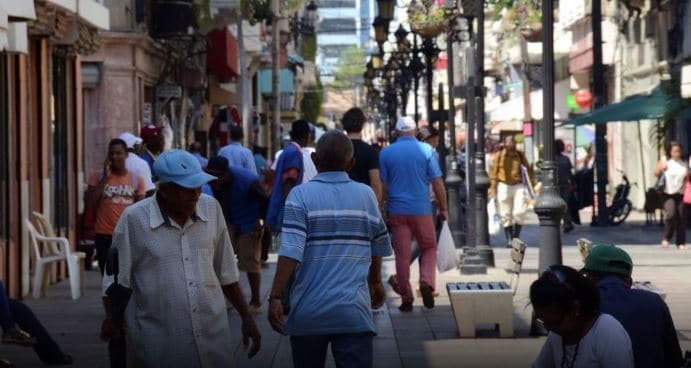The Characteristics of Dominican Spanish (A Funny Approach)

Anyone who has traveled to the Dominican Republic and listened to how we Dominicans speak Spanish knows that we express ourselves in a very unique way.
Yes, Spanish is one of the most spoken languages in the world, I think it is the third most spoken language in the world, but here in the Dominican Republic Spanish has our distinctive stamp.
I think you will need to understand a little bit of Spanish in order to understand the content of this topic.
Dominican Spanish is known for its fluency, speed and many other characteristics. There are different characteristics from many of the other Latin countries and there are also different characteristics for each part of the island.
Let’s take a look at how the people of the north (Cibao), speak differently than the people of Santo Domingo (La Capital) and also how those people speak differently than the people of the south.
Throughout the island, there are some similar characteristics. There is the aspiration of the ‘s’, for example, instead of saying ‘¿Cómo estas?’ you say, ‘¿Cómo tu ta?’, or instead of saying ‘las mujeres’ you say, ‘la mujereh’.
It is something that is used in many Latin countries when speaking informally, but in the Dominican Republic, it is used more.
We speak very fast in The Dominican Republic
There is also yeism. This is when the ll sound becomes a y sound. For example, instead of saying, ¿Cómo te llamas? It sounds like, ¿Cómo te yamas? Another thing that describes Dominican Spanish is the mixing of words.
If the languages of the world were the Justice League, Dominican Spanish would be Flash.
For example, instead of saying ‘voy para la tienda’ one says ‘vua pa’ la tienda’, this has a lot to do with the reason for the speed of Dominican Spanish, words are mixed to make sentences faster and more fluid.
Here we have to shorten the words with the intention of not making the sentences so long, some words are omitted, or mixed, it is not that we speak bad Spanish, this is really a “relaxation” of the language.
Omission of the R in Dominican Spanish
Another characteristic of Dominican speakers is the aspiration of the ‘r’ when using verbs. For example, instead of saying, ‘te voy a buscar de la tienda’ one says, ‘te vua buscá’ instead of saying the r, it ends with a strong letter.
Another example instead of saying ‘tu vas a ver’ one says, ‘tu va vé’. If one were to learn these characteristics, it would help in understanding Dominican speakers.
This phenomenon of omitting the R is also called lambdacism and is very common in the Caribbean islands, especially Puerto Rico, Cuba and the Dominican Republic.
Dominican Spanish for each region of the country
Dominican Spanish can be divided into three different regions. There are the Cibao, the Capital and the South.
Cibao
In the Dominican Republic, “El Cibao”, is the northern part of the country, most represented by Santiago, the second largest city in the country.
In Cibao, where I used to live, people put the ‘i’ instead of the ‘r’ or ‘l’. People in La Capital don’t like that and tend to joke about the Cibaeños’ way of speaking.
The Capital
La Capital, Santo Domingo is the best known and largest city in the Dominican Republic. In Santo Domingo Spanish is known for lateralization. That is the pronunciation of the ‘r’ as the ‘l’.
As a good Dominican, I speak like this when I speak in Spanish. For example, instead of saying ‘abre la puerta’ we say, ‘abre la puerta’. You put an ‘l’ in all the spaces where an ‘r’ should be.
The South
In the south is the opposite of Santo Domingo. Those people put a strong ‘r’ instead of the ‘l’. Those people don’t say, “Voy pa’ la capital” they say “voy pa’ la capitarrrrrrrr” and I’m not making fun, they really talk like that.
Anyway, all Spanish speakers who are not Dominicans say that Dominicans sing when we speak, that may be true but I can’t tell because I am Dominican.
To me in general, Dominican Spanish seems to be super funny, colorful, uncomplicated, it is really a distinctive and unique seal of one of the most spoken languages in the world like Spanish.






